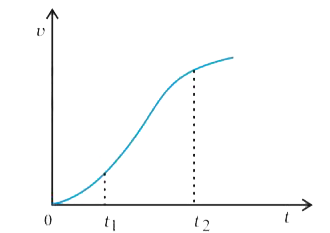Activity of a radioactive substance is A1 at time t1 and A2 at time t2(t2>t1) , then the ratio of fA2A1 is:
a) eλ(t2+t1)
b) eλ(t1−t2)
c) e−λ(t1+t2)
d) t2t1Solution in Punjabi
eλ(t2+t1)
eλ(t1−t2)
e−λ(t1+t2)
t2t1
The correct Answer is:B
Step by step video & image solution for Activity of a radioactive substance is A_(1) at time t_(1) and A_(2) at time t_(2)(t_(2) gt t_(1)) , then the ratio of f(A_(2))/(A_(1)) is: a) e^(lambda(t_(2)+t_(1))) b) e^(lambda(t_(1)-t_(2))) c) e^(-lambda(t_(1)+t_(2))) d) (t_(2))/(t_(1)) by Chemistry experts to help you in doubts & scoring excellent marks in Class 12 exams.
Updated on:21/07/2023Topper's Solved these Questions
- CHEMICAL KINETIC & NUCLEAR CHEMISTRYBOOK - NARENDRA AWASTHICHAPTER - CHEMICAL KINETIC & NUCLEAR CHEMISTRYEXERCISE - Level 2
1 Videos
- CHEMICAL KINETIC & NUCLEAR CHEMISTRYBOOK - NARENDRA AWASTHICHAPTER - CHEMICAL KINETIC & NUCLEAR CHEMISTRYEXERCISE - Level 2 (Q.3 To Q.32)
18 Videos
- CHEMICAL KINETIC & NUCLEAR CHEMISTRYBOOK - NARENDRA AWASTHICHAPTER - CHEMICAL KINETIC & NUCLEAR CHEMISTRYEXERCISE - Level 1 (Q.93 To Q.122)
19 Videos
- SURFACE CHEMISTRYBOOK - NARENDRA AWASTHICHAPTER - SURFACE CHEMISTRYEXERCISE - Level -2
1 Videos
Similar Questions
The forward rate constant for the elementary reversible gaseous reaction
C2H6<⇒2CH3is1.57×10−3s−1at100K
What is the rate constant for the backward reaction at this temperature if 10−4 moles of CH3 and 10 moles of C2H6 are present in a 10 litre vessel at equilibrium .
a) 1.57×109Lmole−1s−1
b) 1.57×1010Lmole−1s−1
c) 1.57×1011Lmole−1s−1
d) 1.57×107Lmole−1s−1
View SolutionThe reaction A(g)→B(g)+2C(g) is a first order reaction with rate constant 2.772×10−3s−1, Starting with 0.1 mole of A in 2 litre vessel, find the concentration of A after 250 sec when the reaction is allowed to take place at constant pressure and at 300 K?
a) 0.0125M
b) 0.025M
c) 0.05M
d) none of these
View SolutionIn the radioactive decay
.zXA→Z+1YA→Z−1ZA−4→Z−1ZA−4 high energy low energy the sequence of the radiation emitted is :
View Solutionfor the graph below, select correct order of temperture ?

View SolutionIf the normals at points t1andt2 meet on the parabola, then t1t2=1 (b) t2=−t1−2t1 t1t2=2 (d) none of these
View SolutionThe activity of a radioactive substance is R_(1) at time t_(1) and R_(2) at time t_(2)(gt t_(1)) . Its decay cosntant is lambda . Then .
View SolutionThe decay constant of radio isotope is λ. If A1andA2 are its activities at times t1andt2 respectively, the number of nuclei which have decayed during the time (t1−t2)
View SolutionThe activity of a sample of radioactive material A_(1) at time t_(1) and A_(2) at time t_(2)(t_(2)gtt_(1)) . Its mean life is T .
View SolutionActivity of a radioactive substance is A1 at time t1 and A2 at time t2(t2>t1) , then the ratio of fA2A1 is:
View SolutionFor any arbitrary motion in space, which of the following relations are true?
(a) vaverage=(1/2)(v(t1)+v(t2))
(b) vaverage=[r(t2)−r(t1]/(t2−t1)
(c) v(t)=v(0)+at
(d) aaverage=[v(t2)−v(t1)]/(t2−t1)
The average stands for average of the quantity over time interval t1 to t2
View Solutionयदि वस्तु समय t1 तक त्वरण a1 से तथा समय t2 तक त्वरण a2 से चले तो उसका औसत त्वरण होगा :
aav=a1t1+a2t2t1+t2
View SolutionThe activity of a sample of a radioactive material is A1 at time t1 and A2 at time t2,(t2>t1) . Its mean life is T. Then ______ .
View SolutionActivity of a radioactive substance is R1 at time t1 and R2 at time t2(t2>t1) then the ratio R2R1 is :
View Solutionरेडियो समस्थानिक का क्षय नियतांक λ है। यदि A1 तथा A2 के विघटन का समय क्रमशः t1 और t2 हो , तो नाभिक की मात्रा जो (t1−t2) समय में क्षय हो जाती है , हैं
View SolutionThe velocity-time graph of a particle in one-dimensional motion is shown in Fig.

Which of the following formulae are correct for describing the motion of the particle over the time-interval t1 to t2 :
(a) x(t2)=x(t1)+υ(t1)(t2−t1)+(1/2)a(t2−t1)2
(b) υ(t2)=υ(t1)+a(t2−t1)
(c ) υaverage=(x(t2)−x(t1))/(t2−t1)
(d) aaverage=(υ(t2)−υ(t1))/(t2−t1)
(e ) x(t2)=x(t1)+υaverage(t2−t1)+(1/2)aaverage(t2−t1)2
(f) x(t2)−x(t1)= area under the υ−t curve bounded by the t-axis and the dotted line shown.
View SolutionFollowing are four different relation about displacement,velocity and acceleration for the motion of a particle in general.Choose the incorrect one (S). a) V_(av)=(1)/(2)[v(t_(1))+v(t_(2))] b) V_(av)=(r(t_(2))-r(t_(2)))/(t_(2)-t_(1)) c)r= (1)/(2)(v(t_(2))-v(t_(1))(t_(2)-t_(1)) d) a_(av)=(v(t_(2))-v(t_(1)))/(t_(2)-t_(1))
View Solution
